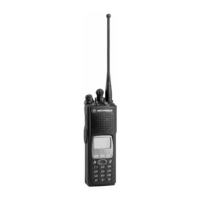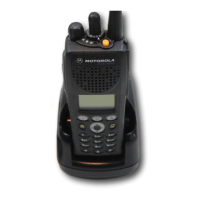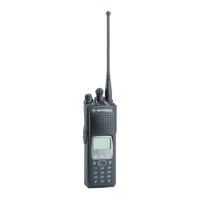User Safety, Training, and General Information
xvi
• ANATEL, Brasil Regulatory Authority, Resolution 256 (April 11, 2001)
"additional requirements for SMR, cellular and PCS product
certification."
Operational
Instructions and
Training
Guidelines
To ensure optimal performance and compliance with the
occupational/controlled environment RF energy exposure
limits in the above standards and guidelines, users should
transmit no more than 50% of the time and always adhere to
the following procedures:
Transmit and
Receive
• To transmit (talk), push the Push-To-Talk (PTT) button; to receive,
release the PTT button.
Hand-held radio
operation
• Hold the radio in a vertical position with the microphone one to
two inches (2.5 to 5 cm) away from the lips.
Body-worn
operation
• Always place the radio in a Motorola approved clip, holder, holster,
case, or body harness for this product. Use of non-Motorola-approved
accessories may exceed FCC RF exposure guidelines.
• If you do not use a Motorola approved body-worn accessory and are not
using the radio in the intended use position in front of the face, then
ensure the antenna and the radio are kept 2.5 cm (one inch) from the
body when transmitting.
Antennas &
Batteries
• Use only Motorola approved supplied antenna or Motorola
approved replacement antenna. Unauthorized antennas,
modifications, or attachments could damage the radio and may violate
FCC regulations.
• Use only Motorola approved, supplied batteries or Motorola
approved replacement batteries. Use of non-Motorola-approved
antennas or batteries may exceed FCC RF exposure guidelines.
Approved
Accessories
• For a list of Motorola approved accessories see the appendix of this user
manual or visit the following website which lists approved accessories:
http://www.motorola.com/cgiss/portables/xts5000.shtml
Electromagnetic
Interference/
Compatibility
NOTE: Nearly every electronic device is susceptible to
electromagnetic interference (EMI) if inadequately shielded,
designed, or otherwise configured for electromagnetic
compatibility.
Facilities To avoid electromagnetic interference and/or compatibility conflicts, turn off
your radio in any facility where posted notices instruct you to do so. Hospitals
or health care facilities may be using equipment that is sensitive to external RF
energy.
Aircraft When instructed to do so, turn off your radio when on board an aircraft. Any
use of a radio must be in accordance with applicable regulations per airline
crew instructions.

